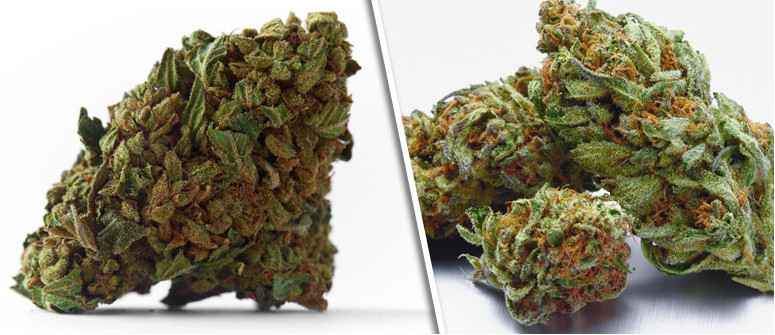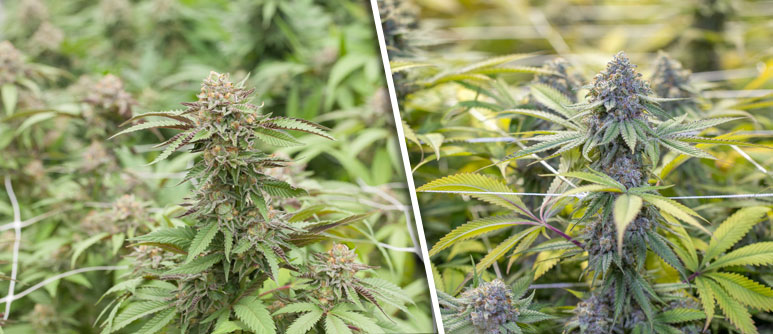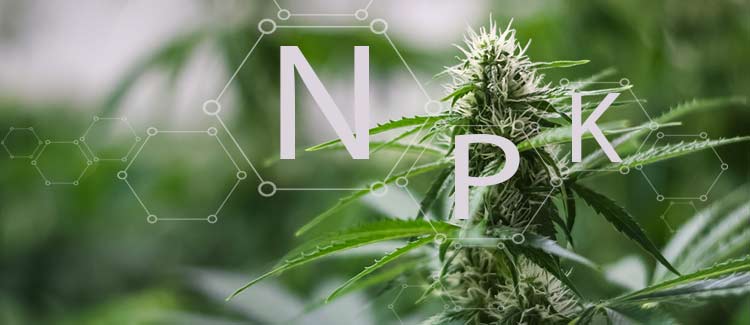8 tips on how to grow the fattest buds

The right timing and knowledge can really increase your yields and the potency of your harvested cannabis buds. Check our list with 8 great tips!
A list of 8 tips to make sure that you get the most out of your plants, your fertilizer, your lighting and growing medium. The right timing and knowledge can really increase your yields and the potency of your harvested buds. So read on how to make the most of your plants.
Different kinds of lighting
Using the right kind of light in the right situation can be the key factor to a good harvest or a poor one. Plants use different kinds of light during different stages of growth so using a more blue light in the vegetative state and a more red light during flowering can definitely boost your yields.
Also the intensity of the lighting is very crucial, making sure the maximum amount of light reaches the plant without scorching the leaves. Lights like LED and CFL (Compact Fluorescent Lamp) can be placed closer than MH (Metal Halide) and HPS (High Pressure Sodium) lighting can be.
The last thing to bear in mind is the life expectancy of your lamps. After a certain amount of hours the lamp is burnt up, if it isn’t replaced you have the risk of lower yields because the lamp is no longer performing as well as it should, or even worse it could cause shortages which in turn can cause fires.
Pruning young plants into a SoG or ScroG setup

Early in the vegetative state make a decision on how you want your plants to grow and prune them accordingly. As stated above light is the key to a heavy yield and good pruning makes sure the plant gets all the light it needs to form big and strong buds.
For a Sea of Green approach we recommend pruning the tops to make sure they all around the same height, this doesn’t have to be completely perfect, just as long as no main buds takes away too much light from its neighbouring plant. As long as they are in the vegetative state topping is the way to go. When in flowering this is no longer an option so make sure that the plant has the desired height, or cut it down by cutting of the main shoot, before letting it go into a flowering state. Making sure to have an almost equal height will make sure all the plants get the maximum of light on the main buds.
When deciding on a Screen of Green setup maintaining an equal height is less of an issue, the plants will be formed to grow under netting that restrains the main branches with buds from growing straight upwards. The one important cut to make early on is the first topping of the main bud. Do this at about equal heights to make sure the main branches can be bent outwards at mostly equal heights. Remember that the main stem will also still grow in height during the vegetative stage and the flowering stage as well.
When the plants have reached high enough to be woven into the netting you check them each day and guide the branches. When you see that a branch with budding is growing out of the net just tuck it back under, making sure not to break the branch. The added benefit of using a ScroG setup is that all the buds that are woven into the net get the maximum amount of light and will swell up. The branches that are growing beneath the net need to be cut off.
An added bonus of effective and correct pruning is that there is a better airflow around the plant and the buds, making it less susceptible to things like rotting of the buds and different kinds of mould or pests.
Bruising or supercropping main buds
It is said that by bruising or supercropping the branches of the main buds you promote the sap stream to the main buds, so that more nutrients may reach the buds and make them swell up even larger and heavier. The practice of supercropping can only be done during the vegetative state of the plant, do not do this during the flowering stage as this will stress the plant too much and can hurt your yields.
To supercrop one of the branches of your plant put it between your thumb and your index finger and start applying light pressure. Crank up the pressure slowly until you hear a snapping or cracking noise and stop immediately. If done correctly the branch should correct itself in a few hours and be upright again. Please do understand that this is a very delicate manoeuvre, breaking a branch can seriously hurt your plant, and should therefore only be applied by experienced growers.
An added bonus of the supercropping is that more light may reach the buds that grow lower in the plant and normally wouldn’t be getting enough light because the supercropped branches form an angle similar to an elbow and grow outwards first before growing upwards again.
Topping or fimming of the main buds
The technique of topping or fimming is the art of duplication. If done correctly this enables the plant to grow two or more main buds from a single stem, effectively increasing the yield, as the main buds are the ones that produce the most.
Topping is done by cutting of the top growth of the plant, but only when it is out of its baby stage. A good rule of thumb is to wait with topping until the plant has at least 3 internodes or pairs of leaves. When you look at the top new growth you will see one big cluster of two new leaves with smaller clusters beside it. The trick is to cut the bigger cluster without damaging the smaller clusters that grow immediately next to it. These two smaller clusters will form the two new branches that the buds will grow on.
Fimming is a bit more of an intricate technique, similar to topping but with the objective of creating not just two but multiple branches sprouting from one cut. The cut is placed a little lower than when topping and should by default damage the side clusters with the means of forcing them to do a divide as well. It is a way of promoting even more lateral growth, which can mean a bigger yield.
Once again this is a technique that needs to be applied during the vegetative stage of the plant, you wouldn’t want to start cutting in the forming buds. The more main branches a plant has the more lower, and less producing, branches can be removed to direct the plants energy to the buds with the most potential for growth. Topping and fimming go hand in hand with SoG and ScroG setups, having knowledge of both techniques can improve your yields with large amounts.
Removing old/unnecessary leaves and small buds
When your plant starts maturing and getting close to flowering or even harvest it will outgrow some of its older needs and with that some of its older leaves. Outside they will most likely turn yellow and fall off by themselves but when growing indoors the high humidity and abundance of light make sure that the leaves stay intact. So even though it may feel unnatural to remove the leaves, they are the plants solar panels, most of the needed nutrients are provided by the (now fully developed) root system.
Around the sixth week of flowering would be the best moment to start defoliating your flowering plants. Make sure not to remove any leaves near the budding sites though, if they seriously block the light off of one of the main buds just tuck it under the branch or tie it to the stem with a small piece of rope. But not too tight though, give the stem some growing space.
Removing small buds that grow on the bottom half or badly lit parts of the plant can direct the energy of the plant to parts that do have a good potential for high yields. I imagine that a plant only has said amount of ‘growing energy’ and by removing smaller buds I make sure no ‘growing energy’ goes to waste.
Besides letting more light reach the buds it also increases the airflow around the plant, which makes it more resilient to mould and pests.
Making sure to provide the right nutrients by giving fertilizer

Photosynthesis or the harnessing of energy from light is the main source of energy for your plants, but with some extra help it can fight diseases better, grow faster and produce bigger yields. By giving the right nutrients at the right time you can help your plants achieve their full potential. Don’t overfeed them though; keep an eye on the leaf ends. If they start burning or curling you should cut back on the fertilizer and try to flush with just water.
In the vegetative stages your plants like a mix with high values of Nitrogen in addition to Phosphor and Kalium, which make up the NPK you see written on the side of the fertilizers and packaged earth. During this stage the plant focuses mainly on growth so a general-purpose fertilizer or one made for the vegetative stage will be best. Sometime your earth is already filled with an NPK mix, in that case you can skip the first month of fertilizing. Otherwise you can start giving fertilizer when the first normal leaves are formed and opened.
In the blooming stage your plant is looking for a nutrient mix that contains higher values of Phosphor and Kalium and low values of Nitrogen. While the Phosphor stimulates your plants to form more buds the Kalium adds the weight to the buds. The Nitrogen could stimulate the plant to focus more on growth than flowering and tends to leave a harsh taste when the plants are not flushed properly before harvest. For these reasons it would be best to use a special fertilizer that was developed for the blooming stage.
The last thing to keep in mind when working with fertilizers is the pH level of the growing medium you work with. Without the right level of acidity the nutrients won’t dissolve properly and can’t be absorbed by the root system. The right pH range for a marijuana growing medium is 6.0 to 7.0 for soil, and 5.5 to 6.5 for coco peat and hydroponic setups.
Providing an adequate size container to grow in
You know how they say that bigger is better? Well in this case it might actually not be, medium would be better. Picking the right size pot for your plants can help your plant reach its full potential and at the fastest pace.
Picking the largest container might be the obvious choice but it will take the plants root system a lot longer to find its way around the soil and reach the nutrients it needs. Often when its time to harvest the plants the root system hasn’t occupied the entire container when dug up and large spaces of soil were unused. When thinking of efficiency more plants could have been placed within the same space when placed in smaller containers. More plants equals a bigger yield so ‘overpotting’ may cut into your total harvested weight.
Choosing a small container may be risky too, you don’t want the growth to be stunted because there was no more room for the root system to occupy. Even though it allows for a larger number of plants to be placed and the nutrients will be found faster by the root system a poorly developed root system is a major issue when going into flowering. Stunted growth means smaller branches with lesser buds and smaller buds.
The trick is to choose the right balance for the species you are currently growing. Take into account that most marijuana plants still grow between 40 and 60 percent in height, so also in root system, so give them enough room to grow. Most Haze strains and Kush strains or hybrids tend to have a long flowering period so these might need a slightly bigger container than a fast flowering Skunk strain.
Harvest when the time is right
When the buds are swelling up and starting to produce smells it is enticing to start thinking about harvesting already. But harvesting too soon or too late can make you miss your mark for the perfect yield.
If the buds are harvested before they’ve had the chance to ripen and mature the effect will be the first thing that will suffer, not to mention taste and smell. When the marijuana is harvested on the early side it does tend to have more of a high effect.
Harvesting too late can cause the potency to start to fade, the effect will also shift more and more towards a couchlock effect. The taste will be better than too early harvested but it will not be to it’s full potential
Looking at trichomes, the hairs on the buds that carry the resin, is the best way to determine when to harvest. When 50 to 70 percent of the trichomes have gone from clear to cloudy is the best time to harvest when you’re aiming for a more high and up effect. If you are looking for a couchlock effect wait until 70 to 90 percent of the trichomes have turned cloudy before harvesting.
.jpg)
.jpg)

.jpg)
